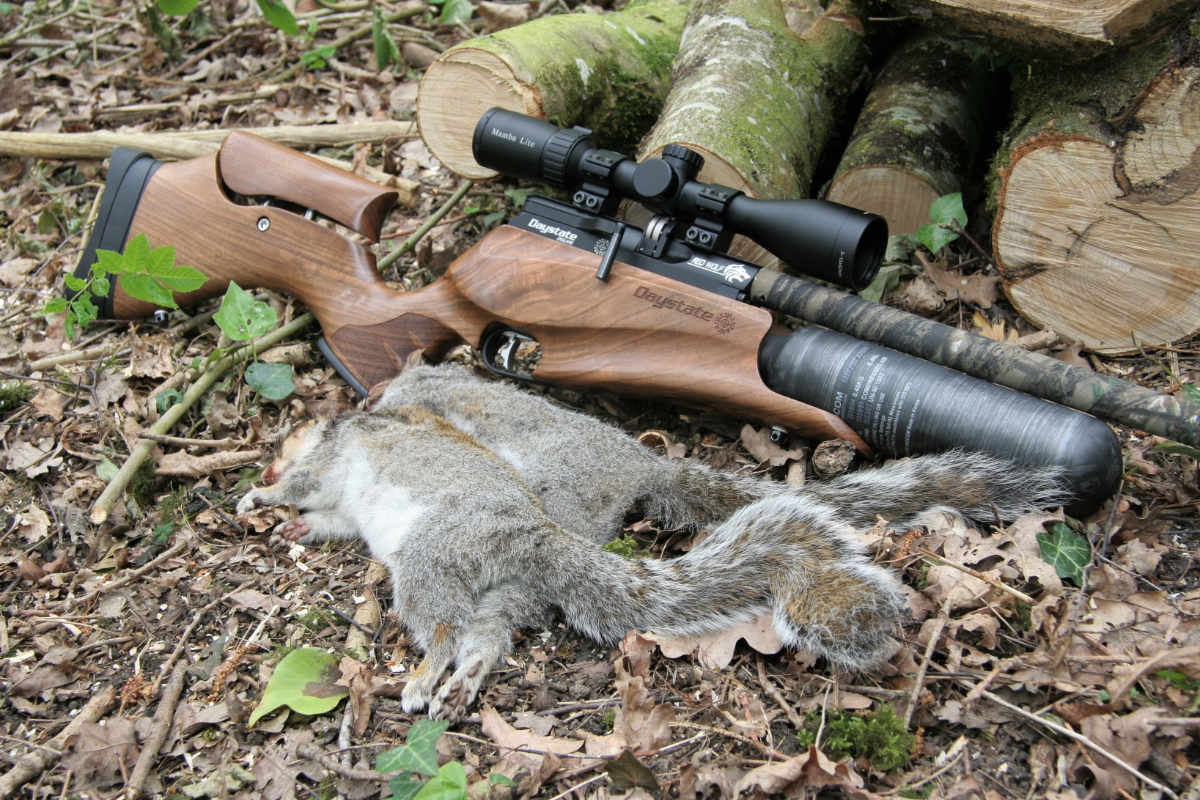Stalking springtime squirrels
What better way to enjoy the countryside as late spring rolls into early summer than with a rove around the woods? A rove around the woods with an air rifle, perhaps.
Much of my grey squirrel control is done from a static position using feeding stations. Getting the greedy rodents queuing up for grain or peanuts and then sniping them from a hide is without a doubt the most effective way to control this destructive pest with an air rifle. Nonetheless, being cooped up inside a camo screen can get monotonous and you can learn a lot about your shoot by spending a few hours trekking around.
My latest outing saw me out and about on a lovely spring morning – the sun was just about poking through the clouds and the air was full of birdsong. The abundance of birds on this estate is thanks in no small part to the landowner’s commitment to the control of grey squirrels, and between us we managed to account for around 200 last winter.
But any number of remaining grey squirrels is too many, and the purpose of this outing was to keep the tally rolling by finding promising places to site a couple of new feeding stations. Although it was a recon trip, I had my Daystate Red Wolf with me as I didn’t want to miss out on any chances. When set on full power, this .22 calibre air rifle produces a muzzle energy of over 30ft/lb, which means it still delivers clean kills at ranges beyond those I usually expect to be shooting over when ambushing squirrels.
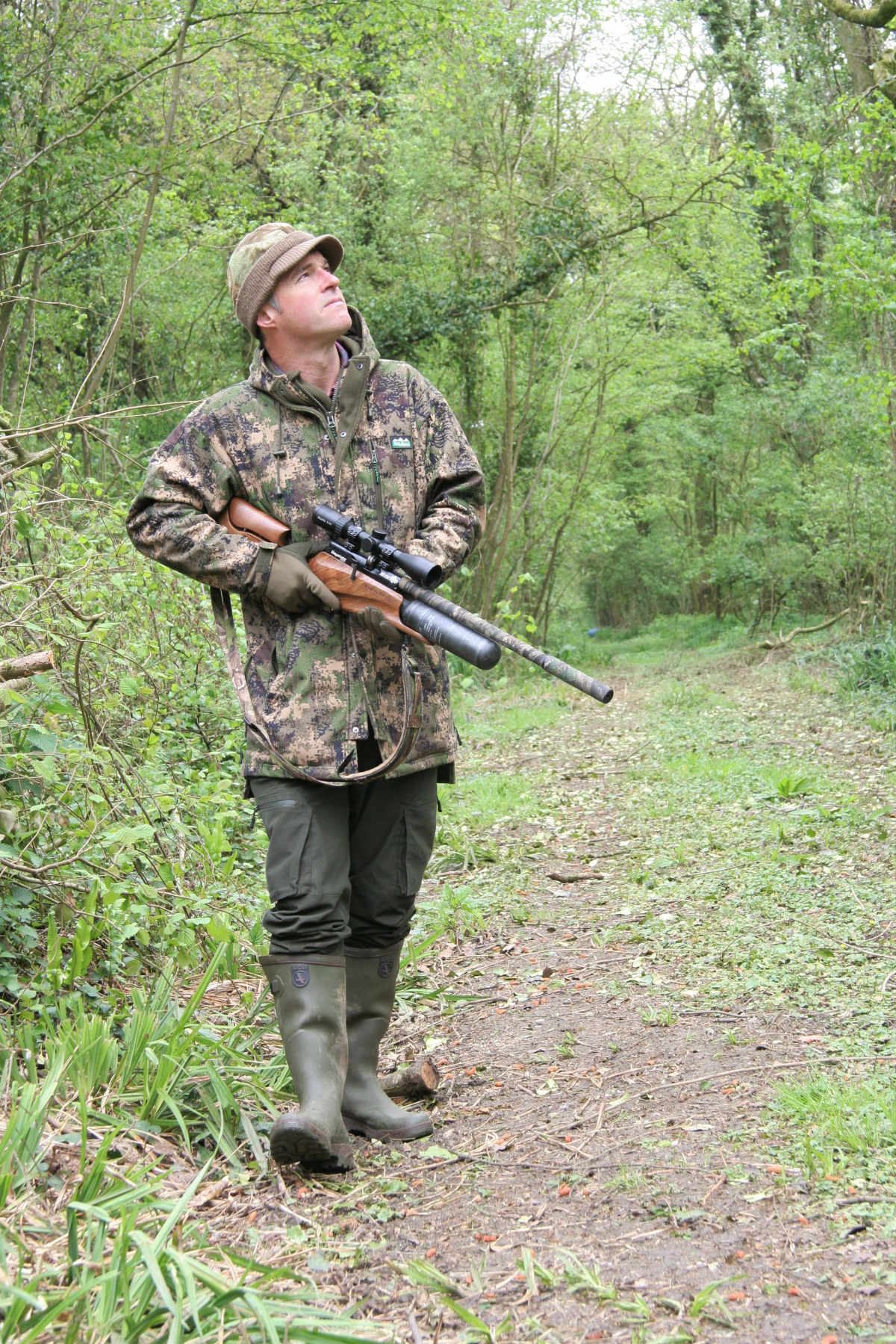
The first block of woodland I covered was a sad example of the damage caused by grey squirrels. This small area of hardwood was planted about 20 years ago and all of the trees are stunted and deformed as a result of bark stripping by grey squirrels. The damage has been detrimental to the wildlife and timber value of the trees, many of which have been completely killed. That amounts to a serious financial loss for the landowner and an immeasurable loss of habitat for native wildlife.
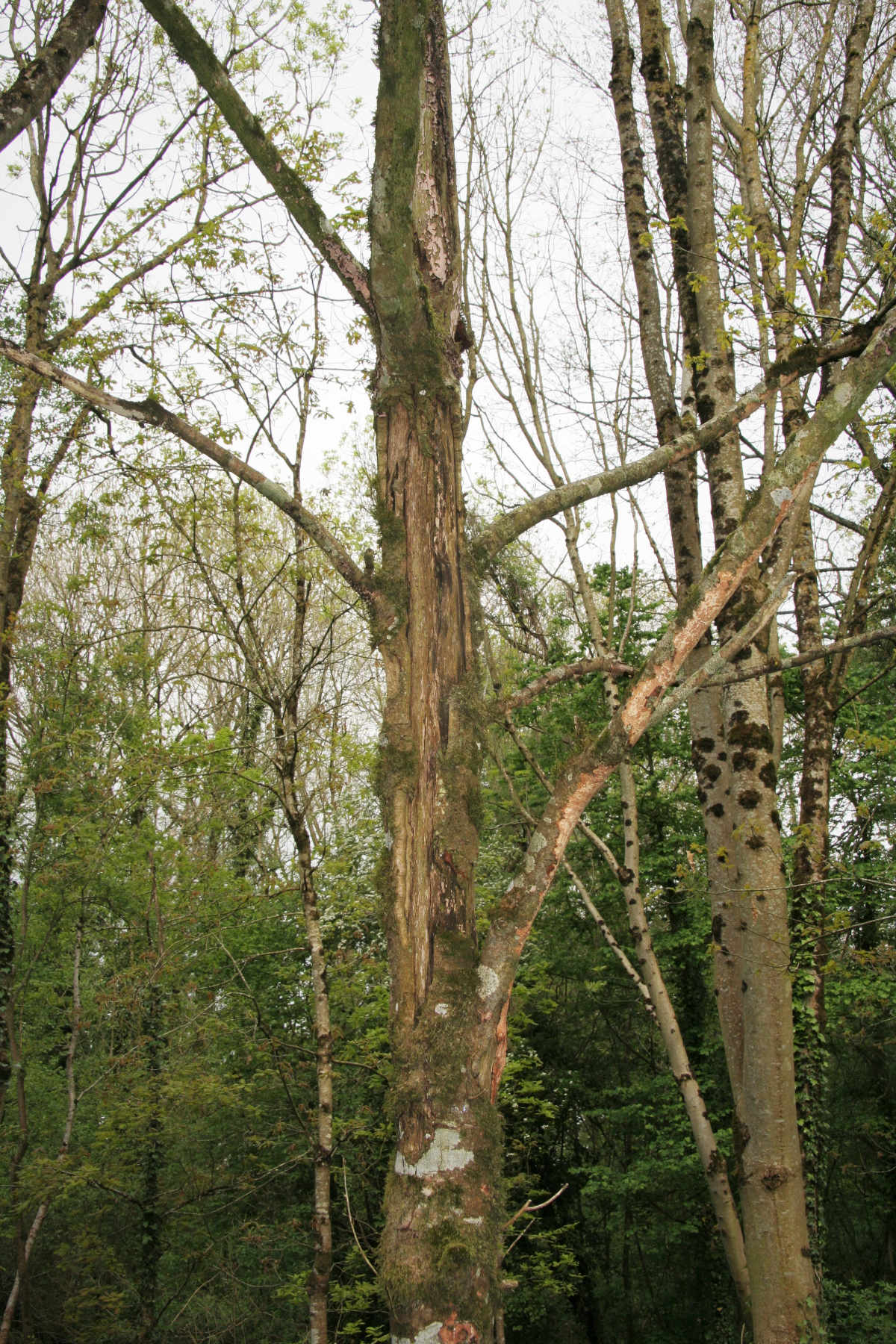
As I moved into the next bock of woodland, a mix of mature oak, ash and beech with a scattering of softwoods, I caught a glimpse of one of the offending squirrels. The acrobatic little rodent had clearly spotted me, and leapt from the top of one tree across to the outstretched branch of another in a bid to escape. It stopped foolishly soon, though, and lingered on a branch about 35m away. I shouldered the Red Wolf, steadied myself as I framed the squirrel in the crosshairs of my MTC Mamba Lite scope, and then dropped it with a whack to the head. That’s on less squirrel wreaking havoc in the woods, and one that won’t be munching through my peanuts when the feeding stations are in situ.
A short while later I saw another squirrel clambering through the treetops. It didn’t hang around to offer me a shot but the sighting confirmed that this area would certainly make a productive site for one of my feeders.
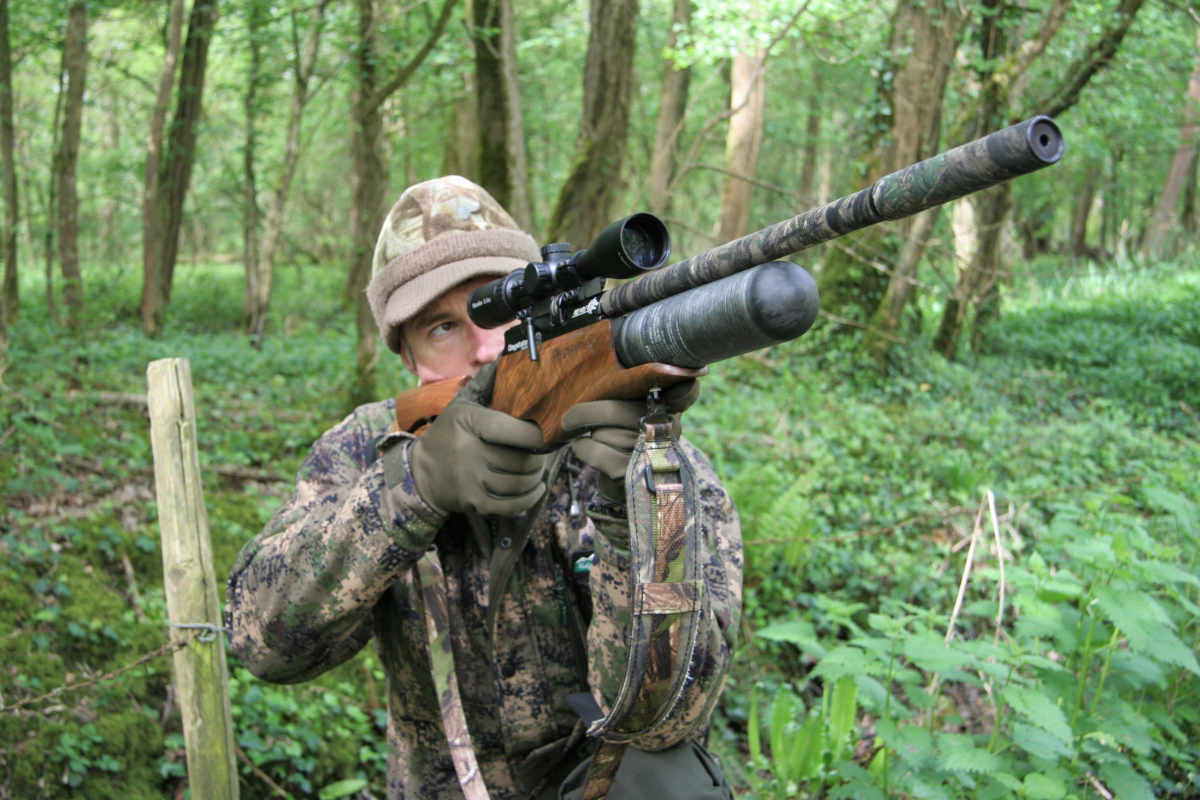
Spotting squirrels and getting shots at them before they clock you and clear off isn’t easy when the trees are in leaf but it can be done. A windless day is an advantage as it makes it easier to see and hear the subtle sights and sounds that can betray the presence of a bushy-tail. My preferred tactic is to move slowly through the woods, pausing every few steps so I can scan for these clues. Sometimes you’ll spot a squirrel clinging to a tree trunk or huddled in the cleft of a branch but the signs are often more subtle. Look out for shaking branches as squirrels clamber through the treetops and listen very carefully for the rustle of moving leaves or the distinctive click of claws on hard bark.
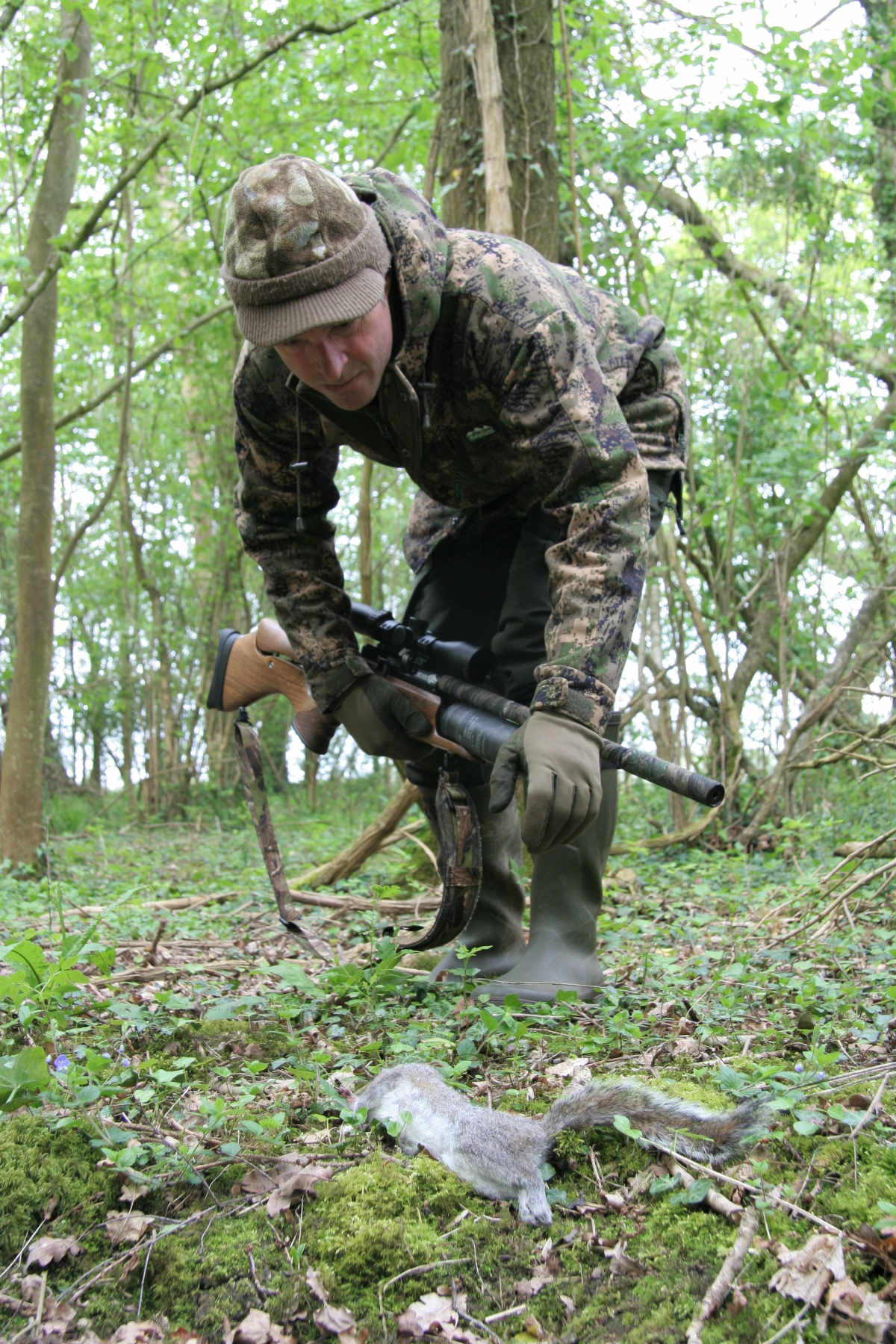
The second and last squirrel I managed to bag during my brief foray actually gave itself away by making a branch spring and quiver as it hopped from one whippy bough to another. The tell-tale shaking branch was unmissable and I soon spotted the offender scrambling along a branch. I clicked my tongue against the roof of my mouth and the startled rodent froze at the sudden sound. That brief pause gave me just enough time to line up a shot that landed a 16-grain Rangemaster Sovereign right between its eye and ear, sending it tumbling through the branches and down onto the woodland floor with a thud.
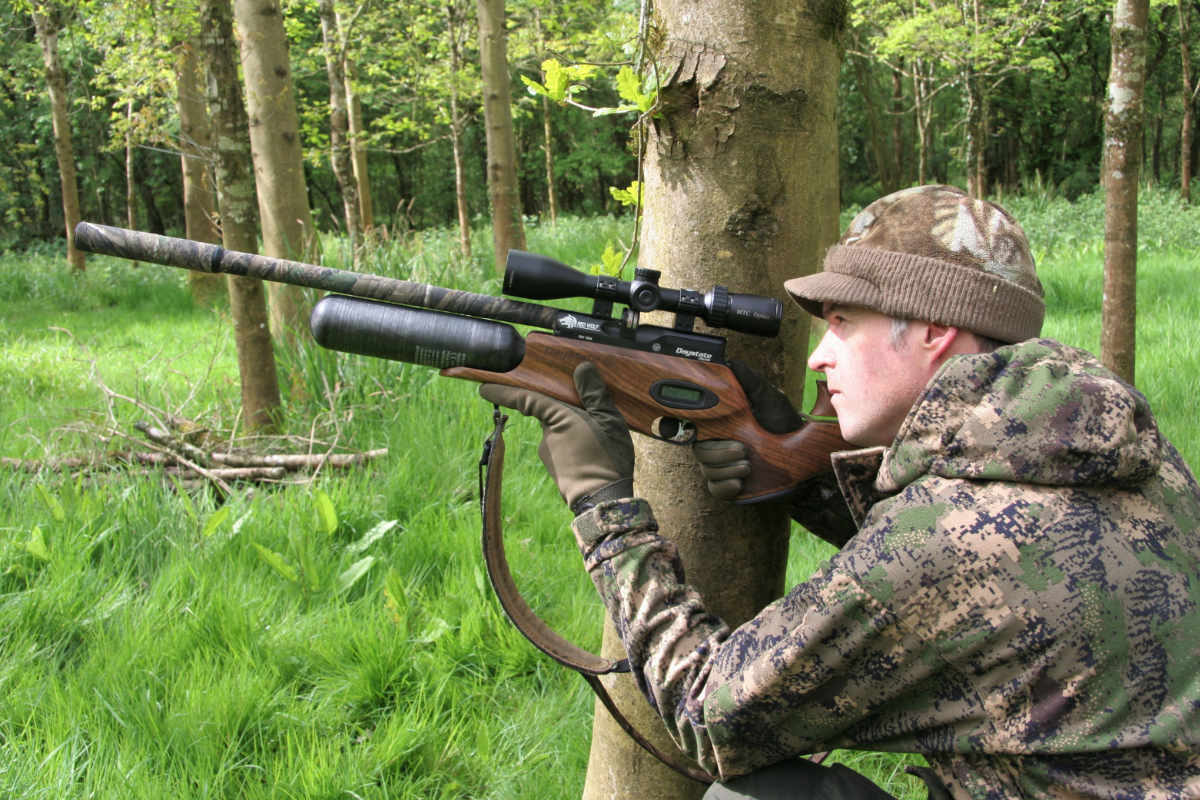
Two grey squirrels is not a big bag by anyone’s standards but they all count, and that short outing resulted in two less of these opportunist rodents stripping bark and helping themselves to the contents of birds’ nests during this year’s nesting season. It had been a thoroughly enjoyable couple of hours, and I was also taking home some welcome free-range meat for the pot. Furthermore, I had noted some very promising-looking places to set up my feeding stations, which will hopefully enable me to account for many more of these destructive rodents over the coming weeks and months.
